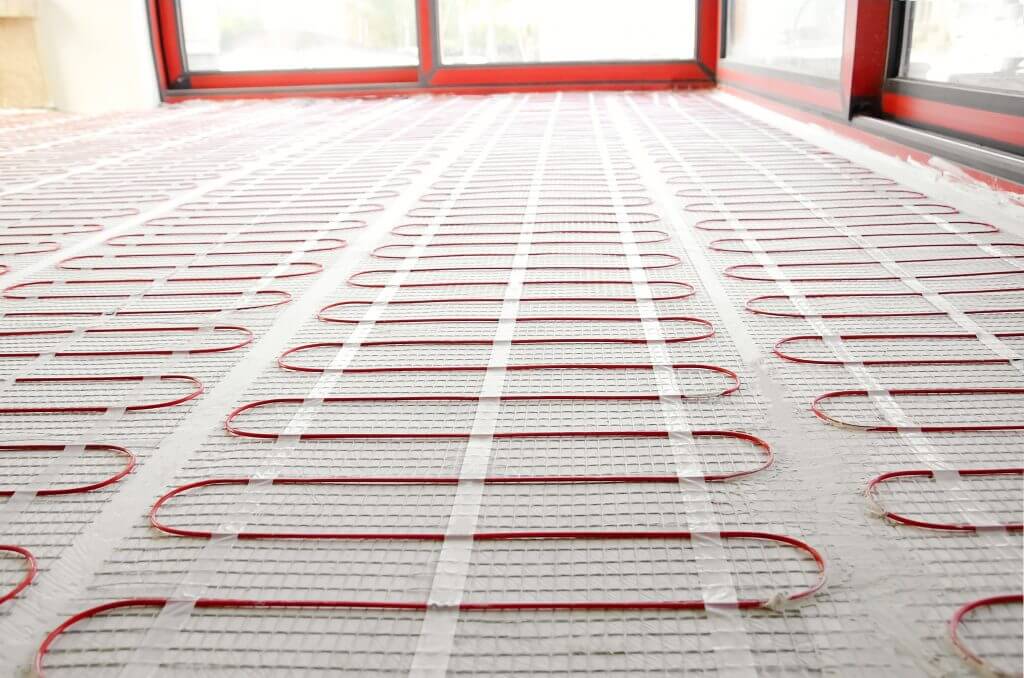As teleworking becomes the norm for many workers in the US and homeowners spend even more time indoors due to the COVID-19 pandemic, the focus on sustainability and indoor air quality is increasing. This trend is driven by energy-efficient solutions like underfloor heating and renewable energy sources like geothermal and solar. Let’s take a closer look into the world of radiant heating systems.

Modern radiant heating systems (infrared panels) support one of two types of coolant – hydraulic or electric. Hydraulic (water) radiant panel heating started more than 50 years ago. Electric radiant heating panels were introduced only after the 1990s. Meanwhile, at the current stage, both technologies are represented already technically heavily changed – with the support of more modern systems. Much like tile stoves, radiant panels are heated locally to create. However, because infrared heating panels are equipped with a thin metal surface with little or no heat mass, these devices can generate heat quickly. This factor attracts applications in places that are rarely used and often in a changing climate – where the operation of tile stoves, jet heaters, and thermally active surfaces of buildings is considered irrational. Since radiant heating panels can generate heat quickly, it makes sense to connect these devices only if there are people in the room. Radiant heating panels seem to be more cost-effective than older heating systems. The main advantages are low weight and compact design.
Heat radiating panels can be installed on walls or ceilings. The fittings support a free-hanging configuration or can be integrated into a suspended ceiling system. These moments once again confirm the practicality of the devices, the possibility of using them in different building rooms. In fact, it is a kind of mobile heating system. On the other hand, the heated surface of the radiant panel is unsafe for outdoor use, as there is a risk of burns if handled carelessly and without a fence. This means that heat transfer through conduction is not possible in this case.
Principle of Operation of Heating Panels
The heated water inside flows through plastic or copper pipes attached to a metal plate. By subtracting heat from the water, the metal plate radiates heat into space. Electric heating panels work similarly, but warmth is generated by passing a current through an electrical resistor. Like water-based thermally active building systems, liquid radiant panels support the cooling effect. Meanwhile, this configuration is not supported by electric heating panels. On the other hand, electric heating panels are easier to install and more responsive than the hydraulic option. The electric heating panel reaches full radiant power in less than 5 minutes.
Association With Traditional Radiator

Liquid radiant heating panels should not be associated with so-called “radiators”, common in European plumbing. The radiating metal surfaces of such “radiators” face each other, so most heating surfaces do not radiate heat directly to the object. Nevertheless, the design aims to create the maximum convection ratio. It is, therefore, logical to call liquid heating panels “convectors”. With energy radiation according to the “to each other” principle, the air coming from the bottom is heated between the panels using conductivity. It rises and heats the room with convection.
Another difference is that “radiators” have a lower surface temperature than infrared panels. As a result, the share of radiated heat in the total heat exchange is only 20-30%. The same applies to “radiators” of electrical panels. The type of heating panel is an infrared ceiling lamp. However, such devices must be used carefully. When it comes to electric heating panels, we are actually talking about electric long-wave infrared heaters. But modern design should not be equated with the older design. Legacy models are known as electric shortwave infrared heaters. The apparent difference is the creation of visible red light during operation. Modern, long-life radiant heaters do not emit visible light and have a lower surface temperature. It should be emphasized: both technologies have a definite impact on human health.
Looking for ceiling or floor heating panels? Get in touch with the professionals at NESR Inc.! Their unmatched Sunboard panels can be customized to fit the comfort of your home and to your taste.

